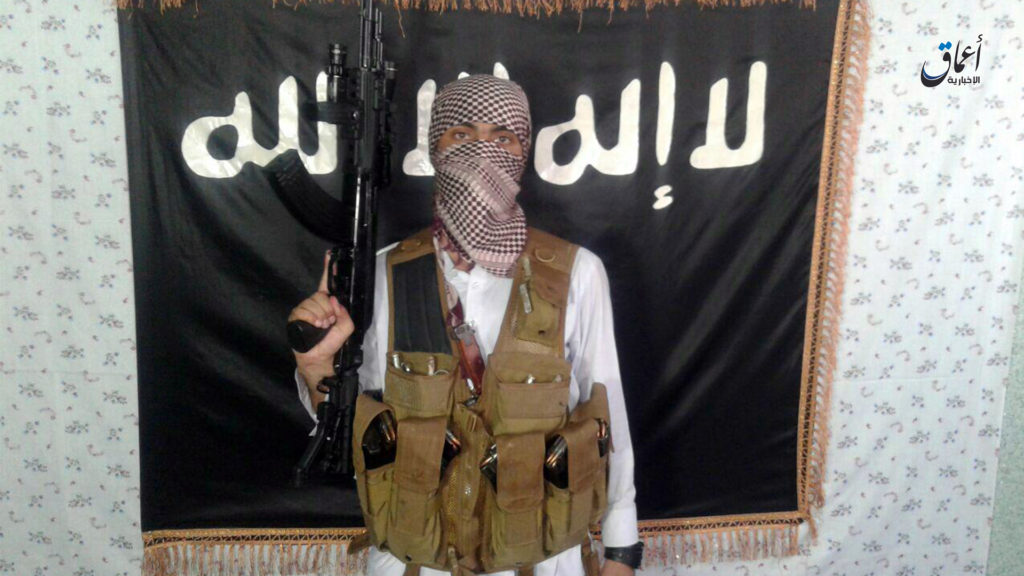
The Islamic State’s Khorasan province claimed credit for yesterday’s attack on a Shia shrine in the Afghan capital of Kabul that killed at least 18 people.
The claim was made through the Amaq News Agency, an official propaganda arm of the Islamic State. According to Amaq, the above “commando,” identified as Ali Jan, detonated his suicide vest after running out of ammunition and hand grenades.
Additionally, Amaq said the first attack was followed up with another shortly afterward, and claimed that 30 security personnel were killed.
Yesterday’s assault on the Karte Shakhi mosque was designed to maximize casualties. It took place as Shia worshipers were observing the holiday of Ashura.
The Islamic State has a history of attacking Shia minorities in Afghanistan. In July, the group killed more than 60 people and wounded at least 200 in a coordinated suicide attack as Hazaras were protesting in Kabul.
Khorasan province is carrying out the orders of Abu Muhammad al Adnani, the spokesman and senior leader of the Islamic State who was recently killed by the US. Adnani routinely called on his followers to ruthlessly target Shia, as they are not to be considered as true Muslims. From a speech by Adnani in February 2012 (translated by the SITE Intelligence Group):
Stop the black extension that is coming towards you. Cut off the head of the [Shi’ite] snake, the tail of which is amongst you. Know that the coming stage is a stage of real confrontation and war against the despicable [Shi’ites], whether you like it or not, and that the war of the Sunnis with the [Shi’ites] is not a sectarian war, like people are braying about. A sect is part of something, and the [Shi’ites] don’t have anything to do with Islam; they have their own religion and we have our own. The war of the Sunnis with the [Shi’ites] is a religious war, a holy war of faith, a war of faith and unbelief, a war of idolatry and monotheism. There is no way out of it and there is no swerving from it. The [Shi’ites] know this well.
Additionally, yesterday’s attack highlights the difference in tactics in Kabul between the Islamic State and the rival Taliban. The Islamic State has hit soft targets in the capital while the Taliban has targeted Afghan security forces and foreign forces and workers, which are better protected.
While the Islamic State has experienced difficulty establishing a significant presence in Afghanistan – and has lost ground in areas such as Helmand, Zabul, and Farah – it still has a foothold in the eastern province of Nangarhar, where it fights both the Taliban and Afghan forces. The Islamic State likely is using this position of strength in Nangarhar to launch attacks into the capital. Additionally, the group may be leveraging legacy networks from the greatly weakened Islamic Movement of Uzbekistan, a portion of which defected to the Islamic State.
Are you a dedicated reader of FDD's Long War Journal? Has our research benefitted you or your team over the years? Support our independent reporting and analysis today by considering a one-time or monthly donation. Thanks for reading! You can make a tax-deductible donation here.








2 Comments
Does the Islamic State have a strength in the whole of Nangarhar or only parts of it? That’s a question I would like to know.
JuSt in parts.